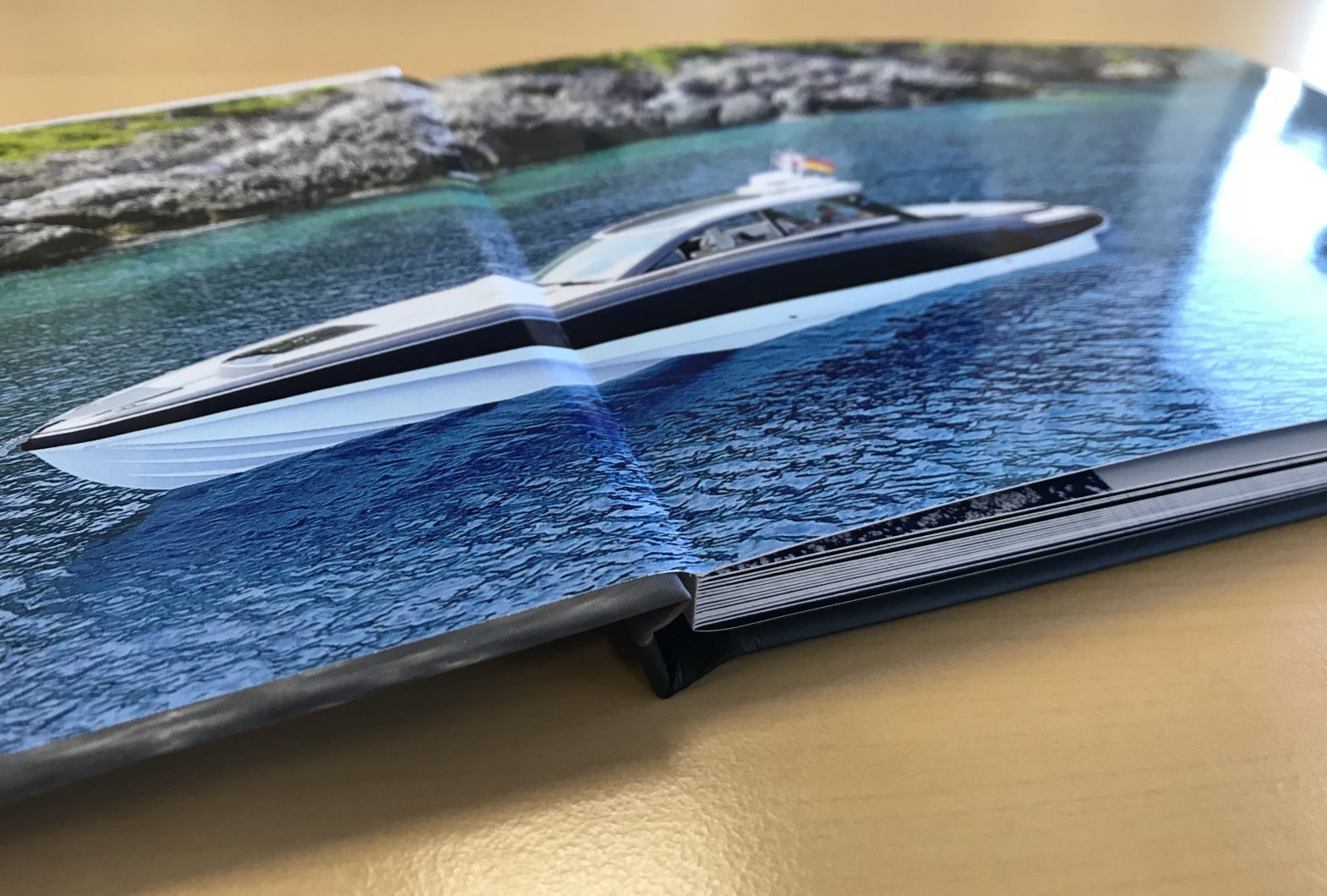Whilst Design Inc is synonymous with high quality creative skills did you know we also provide a range of high quality print services including all manner of print finishing techniques.
When a client’s brochure, magazine, leaflet, stationery (or whatever printed item they require) needs to stand out from the crowd, then it is crucial that the right print finishing technique is used.
For over 20 years, Design Inc have been supporting companies with the creation of their promotional, internal & marketing communications and this includes all printed collateral.
‘Print finishing’ refers to any process that is applied to the printed product after it has gone through the printing process. And, whilst print finishing may be a small part of the entire manufacturing process, it enables the product to truly stand out and make a striking difference to the overall look and feel.
What follows is a listing of some of the more common print finishing technique examples that are used in the printing industry.
Binding
The general term for the gathering of pages of a publication. There are various specialist binding techniques, including:
Blind Embossing
A process when certain text or graphics are raised on the paper (a bas-relief effect), without any associated ink.
Blind UV Varnish
The same technique as UV Varnish except that the varnish coating is applied in an area where there is no print. As the clear varnish is printed as if it were a printed colour, it can be any shape, pattern or words. The great thing about blind UV varnish is that you do not see it until light reflects across the area.
Coated Stock
The general term used for paper having a surface coating which produces a smooth finish.
Custom shape printing
A process where the printed item is cut into a shape after the printing has been applied. The item can be cut in the shape of a circle, a flower, a giraffe or whatever creative shape you choose.
Debossing / embossing
Also known as letterpress, this is the process of stamping an image/shape into the paper so you see a visible dip in the sheet.
Embossing is the reverse (creating a raised image from behind).
This is more often down over the top of an existing image or text but, like UV varnish, you can have ‘blind embossing’ which is where the indent is made onto a non-printed area of the paper.
Die Cutting
The process that cuts out shapes (or holes) from sheets of paper using a ‘cutting forme’, traditionally made from plywood to give printed materials crisp creases and clean cuts.
This technique is common in the manufacture of folders, envelopes or even curved corners on a business card.
Die Stamping
A high quality print finishing technique that dates back to the 16th century. Also known as copperplate printing, this process is similar to embossing but with ink placed in the die before stamping.
Die stamping provides the ability to raise and incredibly fine area of the paper.
Duplex
The process of gluing two sheets of paper (or card) together to create extra thick products which would be too think to pass through a printing press.
The process is just the same for Triplexing but here you use three sheets to make the end product even thicker and harder.
Duplexing with different coloured sheets along with die stamping, can create some truly stand out pieces.
Dust Jacket
A detachable outer dust wrapper around the front and back of a book, usually made of paper and printed with text and illustrations.
Embossing
The process of creating raised text and relief images on paper and other materials.
Endpapers
A protected paper sheet added at the beginning and end of a book and used to provide additional protection. Moreoften used for hardback documents.
Foiling
Otherwise known as foil blocking or foil stamping, this is the process of applying a metallic foil to the surface of a printed piece via a metal stamp (die). Adding a gold or silver foil to a publication raises its perceived quality.
The ‘foils’ are available in a range of colours, finishes and patterns and it is possible to foil block onto many different materials other than just paper and card.
Folding
Folding is done after the product has been printed. There are many ways to fold a printed piece of paper including bifold, trifold, A-fold, Z-fold, concertina-fold or map-fold.
Gilt edging
The process of adding foil to the edge of a product. More commonly seen on invitations or on prestige hard-back books. Foils come in gold and silver, as well as many other metallic colours.
Kiss Impression:
A printing technique that prints a very feint impression of the artwork onto paper.
Lamination
A finish which adds a protective coating layer (matt, gloss or silk) to the printed surface and also improves sturdiness and water resistance. Moreover, it creates a luxurious feel to the printed surface – especially if applied to the covers of a brochure or book.
Layflat Binding
A relatively modern technique which allows print to flow perfectly across a double page spread. Once opened, books lay completely flat without the text and images on that open spread being interrupted by the join. This binding method is ideal to display images at their full potential.
The image above shows an example of a layflat book.
Loose Insert
A piece of paper or card laid between the leaves of a brochure/magazine and not secured in anyway.
Machine Sealing
An invisible coating that is applied to a printed material. Though it doesn’t make any difference to the appearance of the printed item, still, it seals the ink under a protective coating.
Matt Finish
General term for a dull paper finish, without gloss or luster.
Metallic Ink
Inks that are made with powdered metal or pigments that reflect to make text look metallic. Whilst, the most common colours used are silver, gold & copper, there are many other colours available.
Overprinting
This is simply double printing, printing over an area the already has been printed.
Paper-Over-Board
A term that refers to the use of hard covers of a publication. The covers are printed onto paper and that is wrapped around board in the binding process.
Perfect Binding
Where books and publications have too many pages to saddle stitch, perfect Binding is more often the preferred binding solution. The end result is similar to a traditional paperback book.
Perfect bound books consists of two sections; the cover (typically heavier stock) and the text pages. The two sections are then glued together at the spine using the Perfect Binding Machine which applies hot melt glue to bind all the pages together.
PUR Binding
Same process as perfect binding, but using a synthetic adhesive rather than conventional glue.
Saddle Stitch
Also known as FST, this is a type of binding that uses staples to hold the pages together. More often used for booklets and publications with 40 or less pages, the pages of the publication are printed as pairs, collated in sets and stapled (stitched) on its spine to hold all pages in place.
Spiral Binding
A binding process where spiral wire spine is attached through holes punched along the edge of the paper sheets.
Spot UV Varnish
A print finishing technique which adds varnish onto specific areas of a printing item. For example, over the image only – and even if the shape of that image was irregular (ie not in a box).
Spot ultra violet (UV) varnishing tends to be used on brochures, special direct mail pieces, envelopes and even on business cards.
Wire Binding
A popular commercial book binding method. With this binding method, pages are inserted into a C-shaped spine and this is then squeezed tight around the pages. Documents that are bound with wire binding will open completely flat on a desk.
Thermography
A technique that enables a clear powder to be added in an exact location of the printing piece and, after going through a heating process, the area upon which the powder was applied becomes raised.
Thread-sewn
A term used for a very strong binding for high-quality, long-lasting publications and those that need to be opened flat, without splitting along the spine.
UV Varnish
A thin coating is applied to a printed sheet for protection and appearance. It’s dried immediately by UV light.
Varnish
A glossy finish added to a finished printed product to give it an extra shine and protection against damage.
Watermarking
An identifying image or pattern on the paper that appears as various shades of lightness/darkness when viewed by transmitted light. This can act as a background graphic layer and, in the printing of banknotes, acts as an extra form of security.
Work and Turn
A term to describe the printing process when one side of large sheet of paper is printed with both the front and back artwork of a document. When the printing is complete, the paper is turned over and the back and front is printed again – creating two copies of the print.
>>Guide to Web Build Terms
>>Guide to Advertising Terms
>>Guide to Branding Terms

